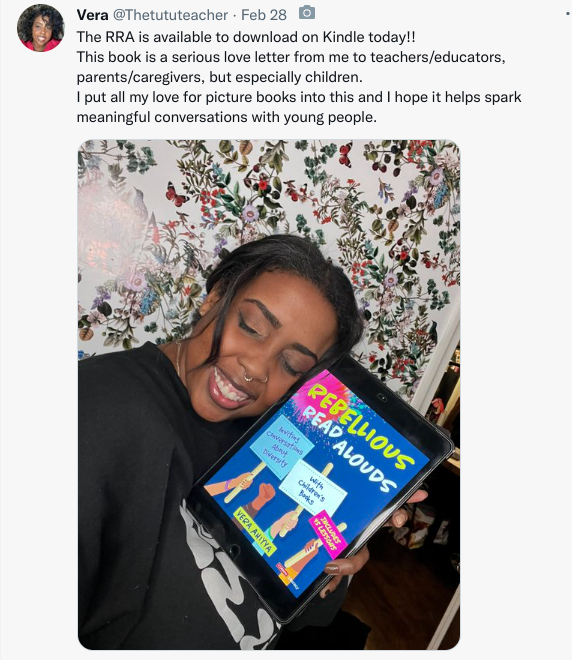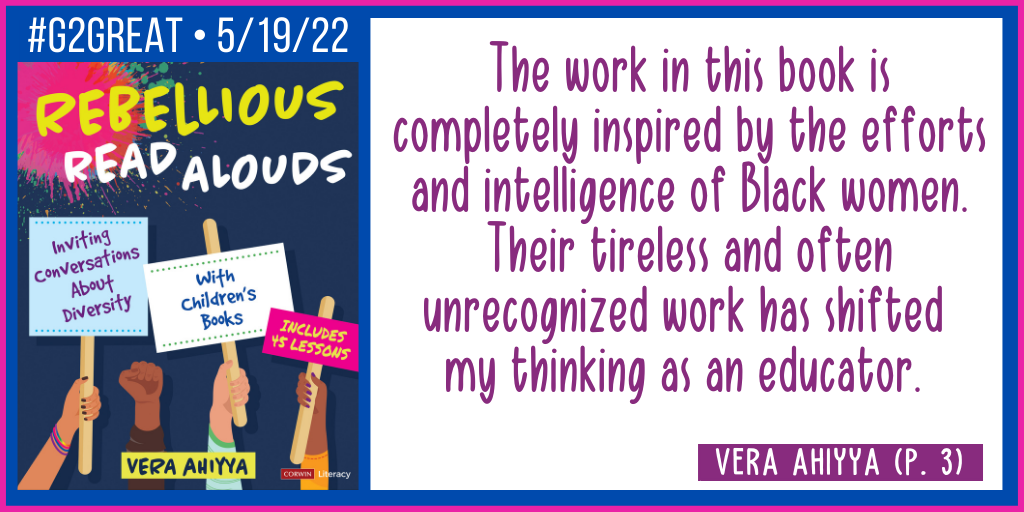
By Fran McVeigh
On Thursday, May 19, 2022, #G2Great welcomed Vera Ahiyya to a twitter chat to celebrate Rebellious Read Alouds: Inviting Conversations About Diversity with Children’s Books. This book had been on my radar since this tweet earlier this year.
As a teacher and author of children’s books, Vera understands both the power and the interest of children in books that spark conversations and Rebellious Read Alouds definitely led the twitter conversation.
Vera doesn’t mince words.
One important word.
“Always”
Six letters.
In response. In affirmation. In solidarity.
Resources such as time is always stretched. But Vera reminds us that we must ALWAYS allow time for heart connections to books. Honoring student experiences and points of view is a critical component of a read aloud. It’s NEVER about checking off a time slot in a schedule.
This post is going to feature many of Vera Ahiyya’s quotes and her tweets from the chat because she adds a new voice to our read aloud considerations. (And some other tweets sprinkled in.) Two sources for inspiration include this pre-chat quote and the book dedication.
Vera’s book dedication answers WHY! Why this book? Why now?
So let’s explore. What is the rebellion?
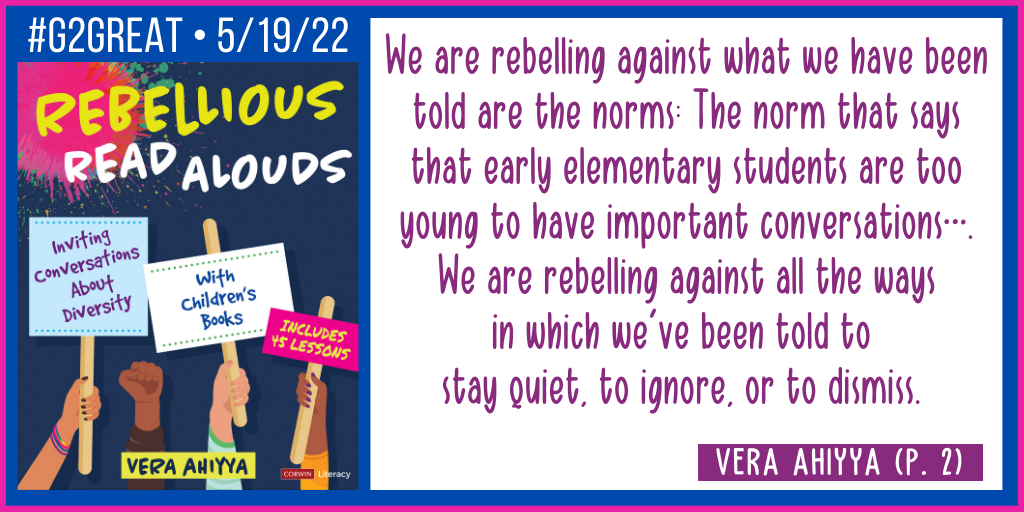
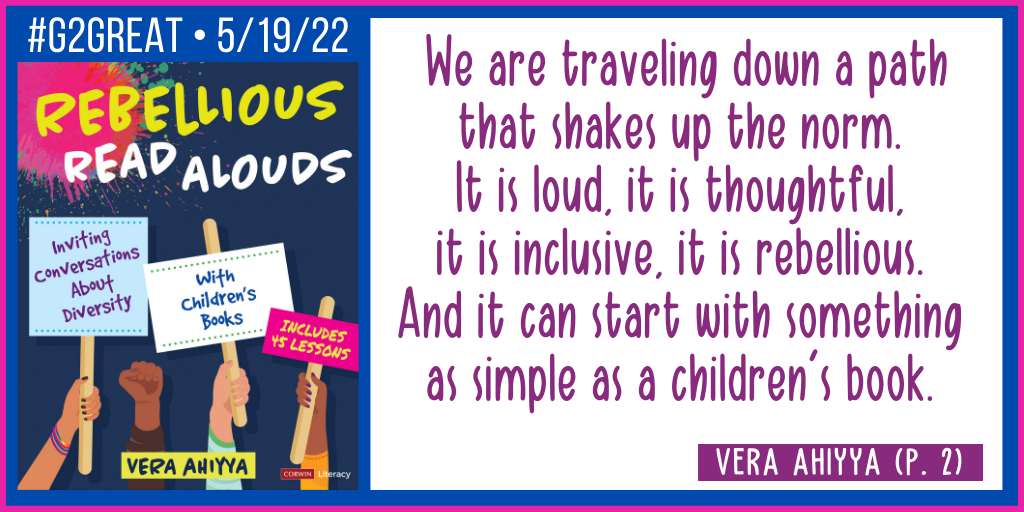
Why rebel against the quiet? Too often the silent have been ignored or dismissed. Too often the silent have not been seen or heard. Too often silence has covered up the need to share thoughts and to grow ideas. Too often silence has kept students and adults from reaching their potential.
No more.
What is the Goal of a Read Aloud?

One goal is definitely to ensure that students LOVE books. Read Alouds will be joyous. Students will want to read the books . . . over and over!
What conditions are necessary for Rebellious Read Alouds?
Build Community

A community is safe where all students (and teachers) feel valued. They trust each other. They know that their contributions to the class are not only welcomed, but are encouraged routinely.

Provide Time
Another condition is that time is provided in the daily schedule for Read Alouds. Teachers do not have to “Sneak Read” their Read Alouds. Read Alouds are encouraged in buildings with strong reading cultures and leadership.
ALLOW Student Responses
Students need read alouds that allow them time to think, react, or respond. The work is too important to be rushed. Students also need time to take the lead in responses as they develop speaking, listening, reading and writing competence and confidence.
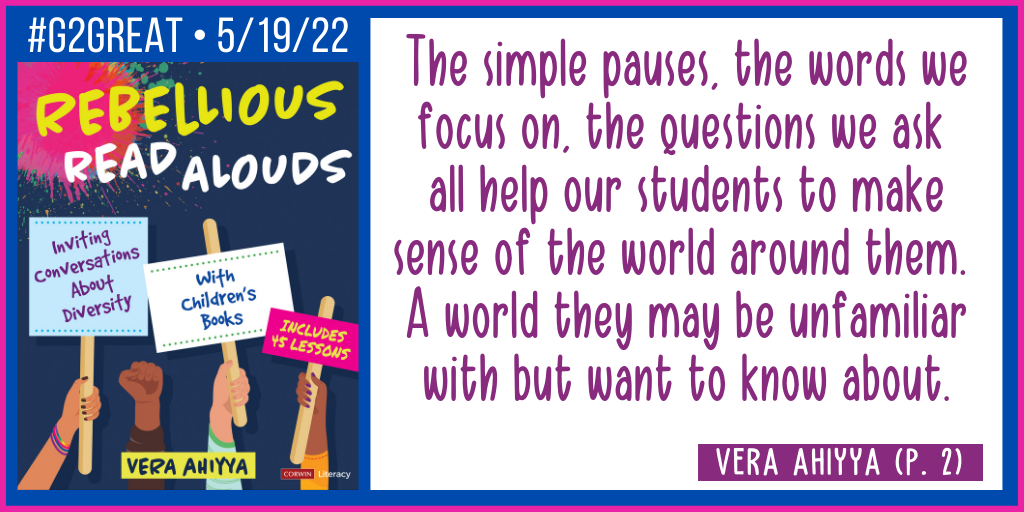

Include Families in Conversations

School communities need to be more inclusive. Families can be a source of input as well as output for developing skills, content, and interest in literacy activities. As their child’s first teacher, they have unique insights into their dreams and the possibilities in front of them.
In Closing . . .
The #g2great chats are now usually six questions with the final question asking for an application of the learning, a shift in thinking, orsome evidence of action going forward. Let’s circle back to Vera Ahiyya’s dedication for this book.

As we consider John Lewis’s words, where and when will you “speak up, speak out, get in the way. Get in good trouble, necessary trouble”? Where will YOU begin?
Additional Resources:
Free resources from Corwin link
Background from Bishop and Hammond link
Sample Text link
